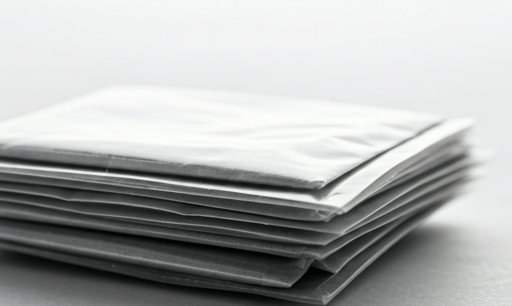Biodegradable Low-Opacity Paper: Mativ's Sustainable Alternative to Plastics
SUSTAINABILITYPACKAGING


The global packaging industry heavily relies on plastics, particularly for transparent or translucent applications. Plastic materials, such as polyesters and polyolefins, dominate due to their strength, transparency, and barrier properties. However, these materials are derived from non-renewable petroleum-based resources. They are neither sustainable nor biodegradable, contributing significantly to environmental pollution.
While paper-based solutions have emerged as an alternative, they struggle to match the performance of plastics in terms of transparency, heat-sealing capabilities, and barrier properties. Additionally, existing methods to enhance paper transparency often involve energy-intensive supercalendering processes and the use of synthetic resins, further undermining their sustainability.
Addressing these challenges, Neenah Gessner, now part of Mativ, has developed and filed a patent application on an innovative low-opacity paper product designed as a sustainable alternative to plastic films. This paper-based solution eliminates the dependency on petroleum-based materials and avoids energy-intensive supercalendering processes. The result is a highly transparent, biodegradable, and compostable paper with excellent mechanical and barrier properties, making it ideal for various packaging applications.
How it works?
Cellulose Fiber Base: The core material is cellulose fibers refined to a high degree of freeness (60° to 95° SR), which enhances transparency and enables the production of ultra-thin papers (as low as 10 g/m²).
Bio-Based Coatings: Two unique coatings are applied:
A transparency agent made from plant-based waxes or oils (e.g., coconut, soy, or rice wax).
A heat-sealable layer, incorporating polymers such as thermoplastic starch, whey protein, or polysaccharides, allowing the paper to form secure, thermally bonded seals.
Sustainability Focus: The paper product is free from paraffins, mineral oils, or synthetic resins, ensuring it is fully compostable and recyclable.
Energy Efficiency: By eliminating supercalendering, the production process significantly reduces energy consumption.
This innovative paper product addresses environmental concerns on multiple fronts. It is composed of more than 90% bio-sourced materials and is entirely free from paraffins, mineral oils, and hydrocarbons. Its coatings are derived from renewable sources, including coconut, palm, soy, or rice-based waxes. Importantly, the product is repulpable, biodegradable, and compostable, offering a closed-loop lifecycle.
This new material opens up possibilities for sustainable packaging across various industries. It can be used to create see-through packaging for food, cosmetics, tobacco, and pharmaceutical products, providing the transparency consumers desire while significantly reducing environmental impact. By eliminating the reliance on plastics and energy-intensive processes, this paper-based solution aligns with global efforts to achieve sustainability goals.
